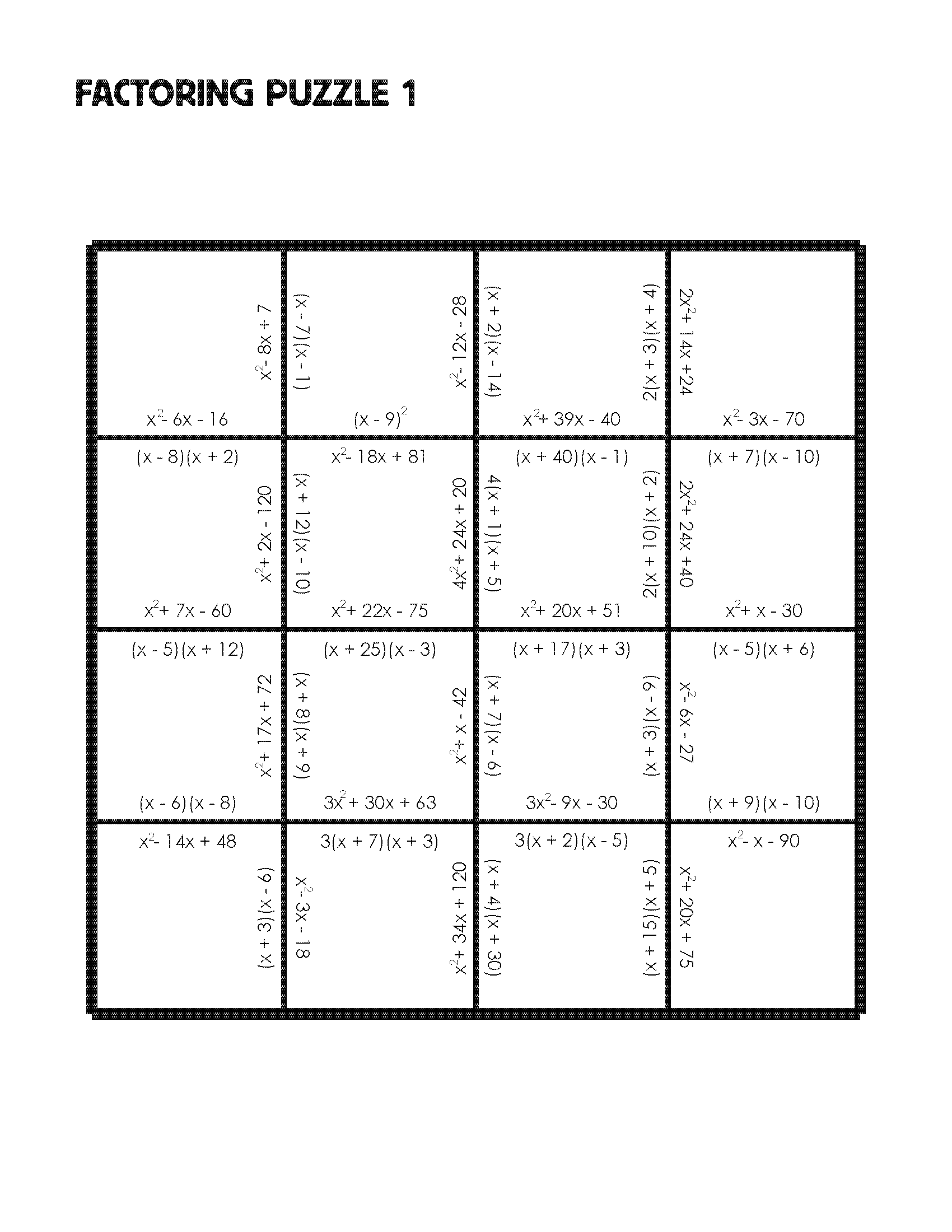The Overview:
I wrote about a factoring puzzle I found online here. That puzzle is difficult because it has trinomials with a leading coefficients other than 1, as well as special products. I wanted to create a puzzle that would be a simple review on factoring trinomials where the leading coefficient is always 1, or could be 1 if the GCF is factored out first. Thus when they eventually challenge the more difficult puzzle, their questions will be focused on factoring, rather that “I don’t get what to do?”.
I did not create a scrambled version, so obviously you will need have a TA cut out the pieces and put them into envelopes.
The Goods:
Update 1:
Thanks to a great comment from John, I have created one that does not have a border, thus allowing us to differentiate for the excelling students. That puzzle is now included above in the original post. The puzzle without the border is the exact same on the inside as the puzzle with the border, I will eventually make that different too when I get some time.






